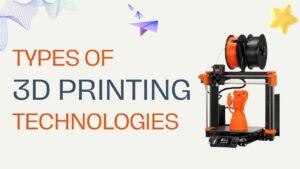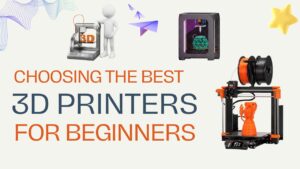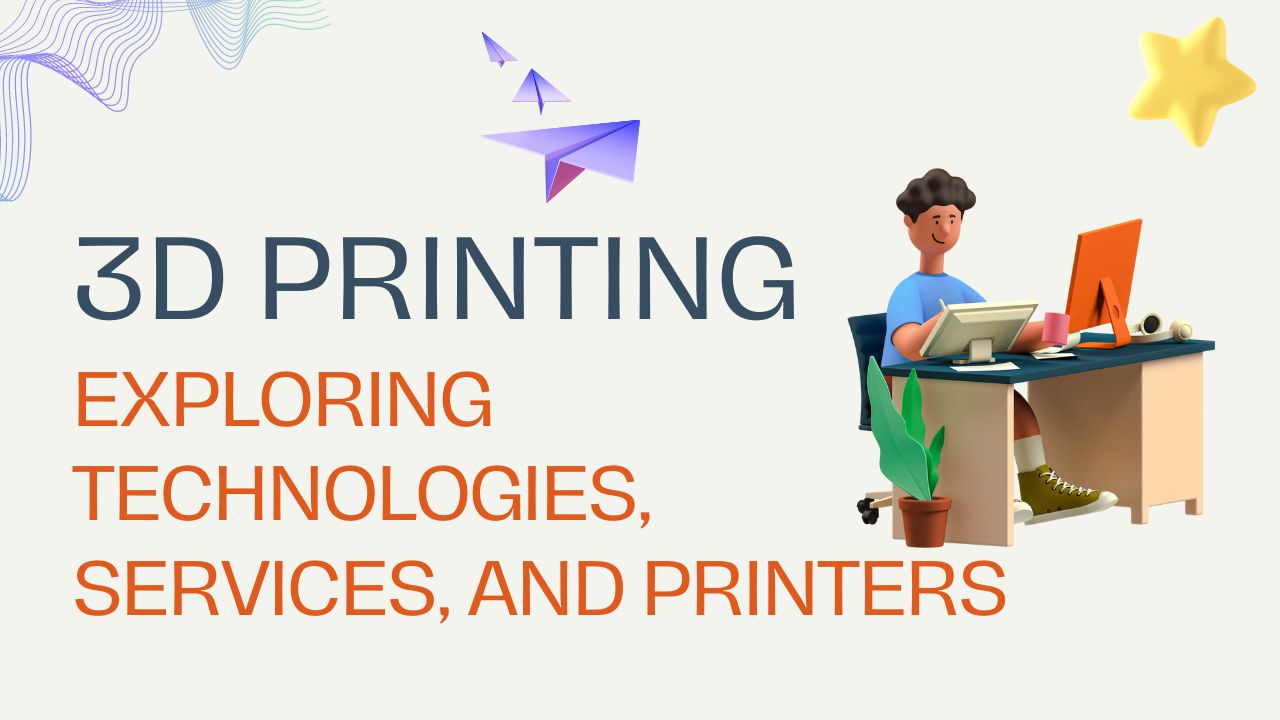3D printing has emerged as a revolutionary technology with the potential to transform various industries. From manufacturing to healthcare, the versatility and adaptability of 3D printers have led to significant advancements in design, prototyping, and production processes. In this article, we delve into the intricacies of 3D printing, exploring its technologies, services, and recommendations for beginners, while also highlighting the emerging trend of metal 3D printing services.
Understanding 3D Printing Technology
At its core, 3D printing is an additive manufacturing process that involves creating three-dimensional objects layer by layer from digital models. Unlike traditional manufacturing methods that involve subtracting material from a solid block, 3D printing adds material progressively, allowing for complex geometries and intricate designs. This technology relies on specialized 3D printing machines, also known as printers, which vary in size, capability, and functionality.
Types of 3D Printing Technologies

In the realm of manufacturing and prototyping, 3D printing has emerged as a groundbreaking technology, offering a diverse range of methods to materialize digital designs into physical objects. Let’s delve into the specifics of three prominent 3D printing technologies:
1. Fused Deposition Modeling (FDM): FDM stands out as one of the most accessible and widely used 3D printing techniques. In FDM, a thermoplastic filament is heated to its melting point and then extruded through a nozzle layer by layer onto a build platform. The material quickly cools and solidifies, forming the desired shape. FDM printers are renowned for their affordability, simplicity, and versatility, making them suitable for rapid prototyping, educational purposes, and hobbyist projects. However, due to the nature of layer-by-layer deposition, FDM prints may exhibit visible layer lines and comparatively lower resolution.
2. Stereolithography (SLA): SLA represents a high-precision 3D printing method that employs a liquid photopolymer resin as the printing material. The process begins with a UV laser selectively curing the resin layer by layer according to the digital design. SLA printers feature exceptional detail, smooth surface finish, and accuracy, making them ideal for producing intricate prototypes, jewellery, and dental applications. While SLA technology offers superior quality, it typically comes with a higher initial cost and requires post-processing steps like rinsing and curing to finalize the prints.
3. Selective Laser Sintering (SLS): SLS stands at the forefront of industrial-grade 3D printing, capable of processing a variety of materials, including plastics, metals, and ceramics. In SLS, a high-powered laser selectively fuses powdered material layer by layer to form the desired object. This additive manufacturing method enables the production of functional prototypes, end-use parts, and complex geometries with minimal material waste. SLS printers excel in manufacturing applications where strength, durability, and geometric complexity are crucial, such as aerospace, automotive, and medical industries. However, the cost of SLS equipment and materials tends to be higher compared to other 3D printing technologies.
Each of these 3D printing technologies offers distinct advantages and applications, catering to diverse needs across various industries. While FDM provides affordability and accessibility, SLA delivers unmatched precision and surface quality, and SLS offers robustness and material versatility. As the field of additive manufacturing continues to evolve, advancements in technology and materials will further expand the capabilities and possibilities of 3D printing, driving innovation and reshaping the way we design and manufacture objects in the digital age.
3D Printing Services
In the dynamic landscape of additive manufacturing, 3D printing services have emerged as a valuable resource for individuals and businesses seeking efficient and cost-effective solutions for their printing needs. These specialized companies offer a wide array of services, spanning from rapid prototyping to low-volume production, enabling clients to access cutting-edge technologies and expertise without the burden of owning and maintaining their equipment.
Prototyping Services: One of the primary applications of 3D printing services is rapid prototyping, where clients can quickly transform digital designs into physical prototypes for testing and evaluation. By leveraging advanced printing technologies such as SLA, SLS, and FDM, service providers can produce prototypes with high accuracy, intricate details, and a variety of materials, allowing clients to iterate and refine their designs efficiently.
Custom Manufacturing: In addition to prototyping, 3D printing services offer custom manufacturing solutions tailored to the unique requirements of clients across various industries. Whether it’s producing personalized consumer products, customized medical devices, or bespoke architectural models, these services enable clients to bring their creative visions to life with unparalleled flexibility and customization options.
Low-Volume Production: Furthermore, 3D printing services excel in low-volume production scenarios, where traditional manufacturing methods may be cost-prohibitive or time-consuming. By utilizing additive manufacturing techniques like SLS and FDM, service providers can efficiently produce small batches of end-use parts, components, and products with fast turnaround times and minimal setup costs, making it ideal for niche markets, limited edition runs, and on-demand manufacturing.
Choosing the Best 3D Printers for Beginners

For individuals venturing into the world of 3D printing, selecting the right printer can be a crucial decision that impacts their overall experience and success in the field. Here are some key factors to consider when choosing the best 3D printers for beginners.
1. Budget: Determine your budget constraints and seek out printers that offer the best value for money, balancing affordability with performance and features.
2. Ease of Use: Look for 3D printers with intuitive interfaces, user-friendly software, and simple setup processes, which are essential for newcomers to navigate and operate effectively.
3. Printing Quality: Pay attention to the printer’s resolution, accuracy, and consistency in delivering high-quality prints, ensuring that it meet your standards for precision and detail.
4. Community Support: Consider opting for a printer with a robust online community, active forums, and readily available resources for troubleshooting and guidance, as community support can be invaluable for beginners seeking assistance and advice.
Some of the top recommendations for beginners include the Creality Ender 3, Prusa i3 MK3S, and Anycubic Photon, renowned for their affordability, reliability, and user-friendly features, making them ideal choices for novices looking to embark on their 3D printing journey.
Metal 3D Printing Services
While the realm of 3D printing has long been associated with plastic-based materials, the emergence of metal 3D printing services is heralding a new era of possibilities in additive manufacturing. Unlike traditional methods that rely on subtractive techniques, metal 3D printing processes utilize advanced technologies like Direct Metal Laser Sintering (DMLS) and Electron Beam Melting (EBM) to create intricate metal parts with unparalleled precision and strength.
Expanding Applications: Metal 3D printing services are revolutionizing industries where the demand for robust, high-performance components is paramount. In aerospace, for example, the ability to fabricate complex geometries and lightweight structures using metal alloys such as titanium and Inconel is driving innovation in aircraft design and manufacturing. Similarly, the automotive sector is leveraging metal 3D printing to produce lightweight, durable parts for engines, transmissions, and chassis components, enhancing performance and fuel efficiency.
Quality and Reliability: One of the key advantages of metal 3D printing is its ability to deliver parts with exceptional mechanical properties and surface finishes. By utilizing precise laser or electron beams to selectively melt metal powders layer by layer, these processes ensure uniformity and integrity in the final product, resulting in parts that meet stringent industry standards for strength, durability, and dimensional accuracy.
Customization and Optimization: Metal 3D printing services offer unparalleled flexibility in part design and customization, allowing engineers to optimize components for specific performance requirements. By harnessing the power of generative design algorithms and topology optimization techniques, designers can create lightweight, organic shapes that maximize strength-to-weight ratios and minimize material usage, ultimately reducing costs and lead times while maximizing performance.
Applications Across Industries: The versatility of metal 3D printing has led to its adoption across a diverse range of industries, including medical, where implants, prosthetics, and surgical instruments can be customized to fit individual patient anatomies with unprecedented precision and biocompatibility. Additionally, the oil and gas sector is exploring metal 3D printing for manufacturing components used in drilling equipment, pipelines, and offshore structures, where corrosion resistance and high-temperature performance are critical.
Innovation Driving Growth: As metal 3D printing technology continues to evolve and mature, the range of applications and materials available is expanding rapidly. From exotic alloys like Inconel and titanium to more affordable options like stainless steel and aluminium, metal 3D printing services offer a wide array of material choices to suit diverse application needs. Furthermore, ongoing research and development efforts are focused on enhancing process efficiency, increasing build volumes, and improving surface finish quality, paving the way for even greater adoption of metal additive manufacturing in the years to come.
Metal 3D printing services are reshaping the manufacturing landscape by offering unprecedented capabilities in terms of design freedom, material performance, and production efficiency. Whether it’s producing lightweight aerospace components, customized medical implants, or high-performance automotive parts, metal additive manufacturing is unlocking new frontiers of innovation across industries. As the technology continues to mature and become more accessible, its potential to drive sustainable growth and disruption in traditional manufacturing processes is limitless.
3D printing continues to revolutionize the way we design, prototype, and manufacture objects across various industries. Whether you’re a novice enthusiast or a seasoned professional, there’s a 3D printing solution available to suit your needs, from entry-level printers for beginners to advanced metal 3D printing services for specialized applications. As technology evolves and becomes more accessible, its potential to drive innovation and creativity knows no bounds.



